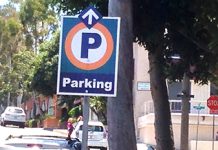Laguna’s Police Chief Paul Workman urges the imposition of a speed limit on skateboarders, one of many recommendations in a report he submitted last week to a city committee.
Workman’s analysis of the committee’s draft proposals to regulate skateboarding in Laguna pointed out several conflicts with existing laws. He concluded that committee recommendations to apply the same vehicle code provisions that regulate bicyclists to skateboarders as overly broad. Instead, Workman suggested the committee devise ordinances that define the behavior to be controlled.
“That’s like starting from scratch again; back to the drawing board,” said skateboarding parent Chad Gibbs, who has actively participated in the local debate over skateboarding.
Committee members could not be reached or failed to return phone calls seeking comment on Workman’s recommendations.
Next month, the committee was expected to finalize its recommendations, which require City Council approval. Workman’s criticisms may delay that schedule.
Workman also found fault with the committee’s suggestion that skateboarders obey vehicular speed limits. “These limits are established based on innumerable studies, federal vehicle regulations, state law and driver reaction time, and have never taken into consideration the capabilities of a skateboard and rider,” he said.
His report noted the department has received 436 calls for service involving skateboarders from Jan 1, 2008 to Sept 15, 2010, a demand for service Workman called “significant.”
During the same period, police records show there have been 1,683 calls for drunk driving, 1,090 calls for reckless driving, and 907 reports for hit and run.
Bases on a review of regulations elsewhere, Workman recommended adopting a speed limit for skaters, noting that Los Angeles County established a 10 m.p.h. limit and San Clemente 20.
He also suggested limiting skateboarding to specific streets, though he did not offer examples. The committee previously considered a similar ban, but rejected the idea at its Sept. 23 meeting, concluding skaters would simply shift to other streets.
Tension among skateboarders has escalated in recent months as officers have instructed skaters to adhere to state vehicle code rules governing pedestrians, thus directing them to the left side of the road toward oncoming traffic, which most skaters consider dangerous.
“This is not a problem in most areas of Laguna Beach except for Park Avenue between Wendt and Hidden Valley, which has a portion of roadway that fits this description and has created some misunderstandings between the officers and the skateboarders,” said Workman.
Gibbs has spoken directly with a police officer who told skaters to ride on the left. “We talked to the traffic cop in the YouTube video and he just said he is doing what he’s told, but we can’t have kids riding on the wrong side, against traffic. We need to come up with a solution and quick.”
Gibbs also asserts that skateboarders are not pedestrians, and should be re-classified and required to follow traffic rules.
Workman reviewed 82 pages of call notes on skateboarders, recommending the committee do the same, and sought input from every police department in the state, though he received little feedback. Other cities’ policies may not serve as good models anyway because of Laguna’s terrain, he noted.
The committee requirement for skaters to wear a light while riding at night should also restrict riders to the right side of the road to avoid blinding oncoming motorists, Workman added.
He recommends requiring riders to stay to the right of the road when passing stopped cars, whereas the committee would prevent skaters from passing on the right.
Some of the committee’s recommendations are already required under state law or municipal code, such as helmets for skaters under age 18, so are not in contention.
Workman upheld violation fees of $25 for the first offense, $50 for the second, and $100 for subsequent offenses, with the stipulation that the City Council retain the right to amend that in the future.




